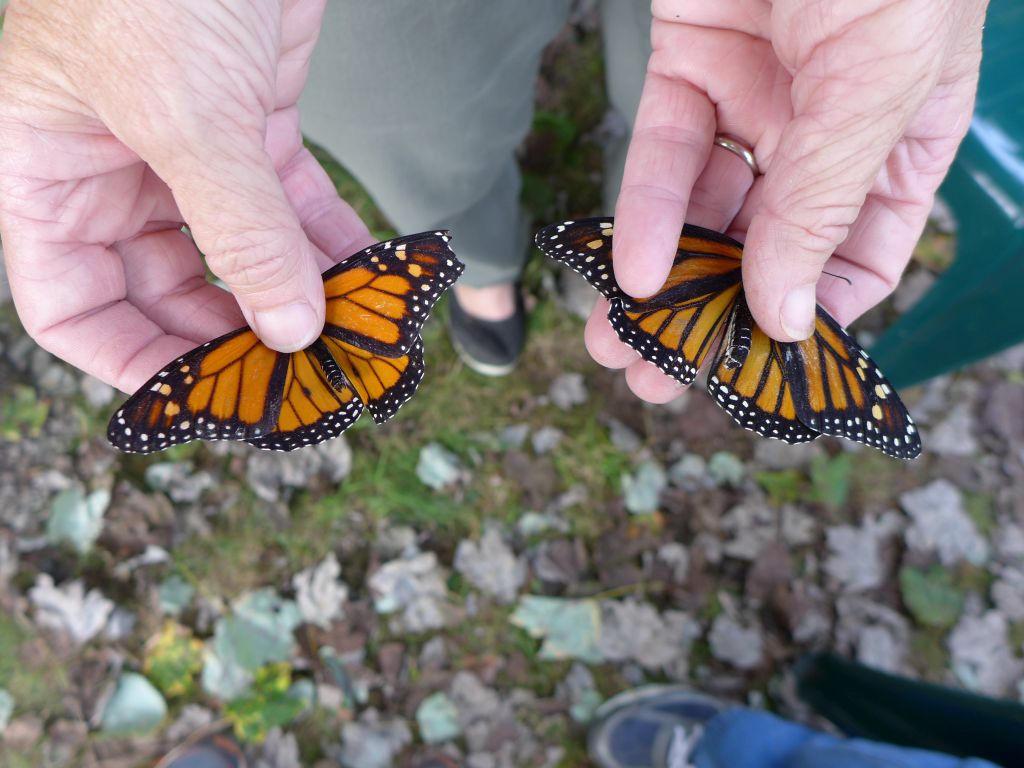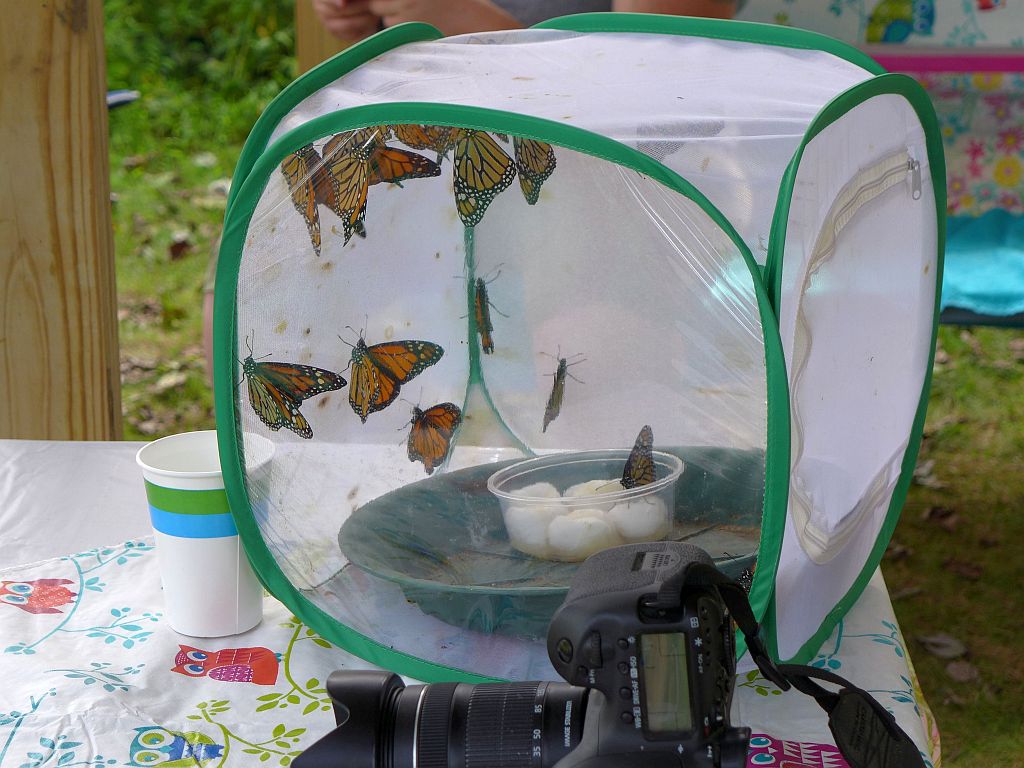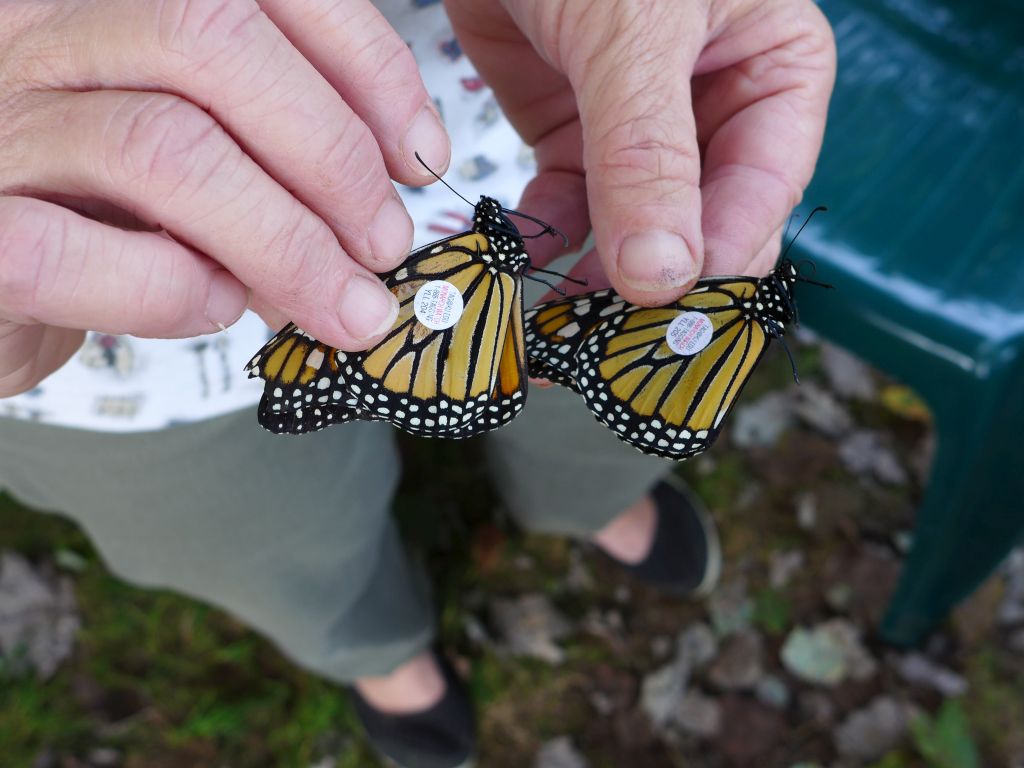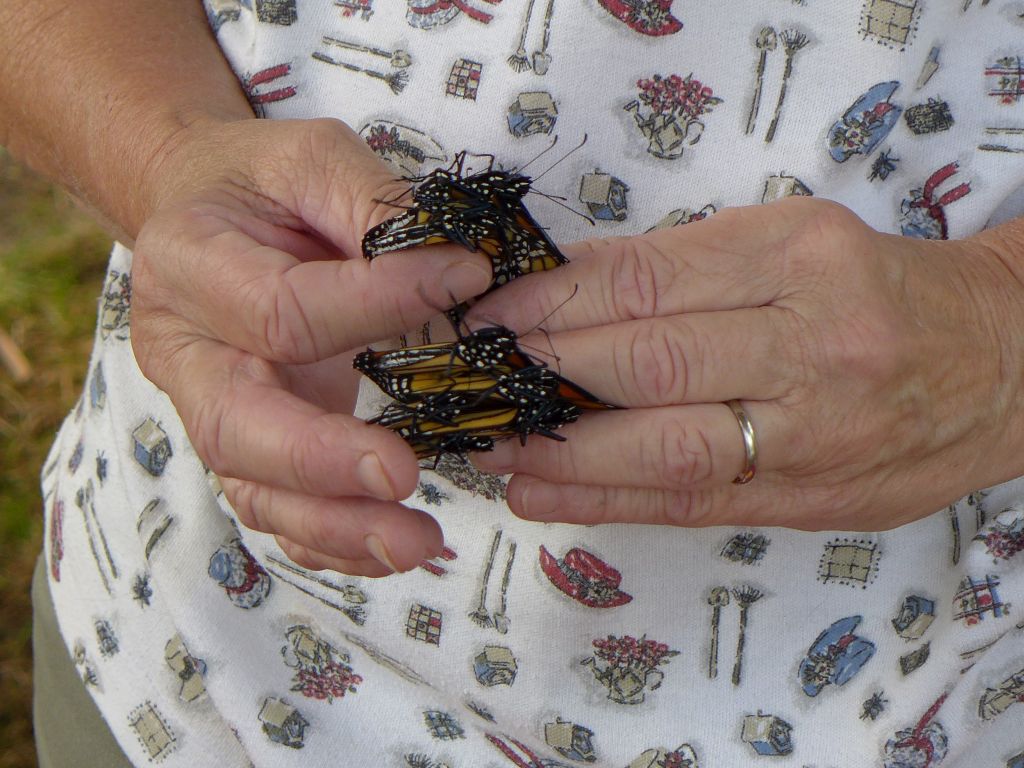
27 August 2018
Two years ago I saw very few monarch butterflies in the southwestern Pennsylvania. Last year I saw more. This year has been spectacular!
Marcy Cunkelman, of Indiana County, PA, has been raising monarch butterflies indoors for at least a decade. On August 19, she showed us how she collects monarch eggs in her garden, raises the caterpillars, and releases the butterflies.
To prepare for the event she kept one or two days’ worth of newly emerged butterflies in this enclosure. In such a short time she had two dozen monarchs ready to go — the most I’ve ever seen at once! (Half are out of view, hanging from the ceiling of the enclosure.)

Before releasing the butterflies Marcy showed us the difference between males and females (at top). Males have a black dot on each hindwing. Females do not.
Monarchs migrate to Mexico for the winter so a butterfly from Marcy’s garden may show up anywhere on a 2,400 mile route. To find out where her monarchs go Marcy applies monarchwatch.org tags, similar to bird bands, to her butterflies before she releases them. Monarch Watch lets her know where her butterflies are found.
Since she didn’t want to run out of tags, Marcy tagged just four of the two dozen butterflies. Two are shown below.

Each of us released a butterfly but that still left a dozen waiting to go, so Marcy collected the rest in her hands and …

… released them all at once. Fly away! (My camera captured the last one leaving at top right.)

If you find a tagged monarch, contact monarchwatch.org to find out where it came from. Over the years, some of Marcy’s butterflies have been found at the wintering grounds in Michoacán, Mexico.
Learn more from Marcy about raising monarch butterflies in this 2009 video: Monarchs With Marcy Cunkelman, August 2009
(photos by Kate St. John)
Kate, there is a plastic container in the bottom of the monarch cage. Do you know what liquid is in the container with the cotton balls? Tks!
Donna, I don’t know what liquid Marcy’s using to feed the monarchs but I know it’s on those cottonballs.
Marcy told me she uses apple juice.
Raising Monarchs is great fun and a great wonder of nature to behold. My wife and I did this for several years when we home schooled our three children. Even now I still have some milkweed plants growing that have several Monarch caterpillars munching away as they ready themselves to transform into magnificent butterflies only to take off and head for Mexico.
You will also note on the female her thin dark bands are wider than on the male.
Nice post Kate, thank you,
Gene
Where in SW Pa is Marcy located?
A couple of years ago, I had hundreds of Monarch caterpillars dining on my milkweed. Then less & less the past couple of years. This year, I’ve had maybe 10 caterpillars. I did see one transform from caterpillar to chrysalis in less than 3 hours yesterday. And there was a Monarch laying eggs on the milkweed yesterday, I am hopeful for lots of caterpillars. Interesting how my Monarch observations are the opposite of Kate’s. I’m north of Pittsburgh, in Gibsonia.
Scott, Marcy lives in Indiana County.
I went to Mingo Creek Park in Washington Co for the first time last week. There was a hugh field of milkweed plants in the park (next to the old park office) and at anyone time I could see 15 – 20 Monarchs flying around along with various other butterflies and several hummingbird moths. It was definitely the most Monarchs I have ever seen at once. I could see several Monarch caterpillars munching on the milkweed but no chrysalis although I’m sure they were there. It was pretty amazing!!
Monarchs west of the Rockies actually spend the winter in California, not Mexico. The coastal forests are similar to the climate further south, so they don’t travel as far. The location I’m most familiar with is the Monarch Grove in Pismo Beach, CA. The population there has dwindled significantly over the past 30 years, but they still have as many as 20,000-30,000 monarchs there in a single day.
If you’re ever there during the winter, definitely check it out!